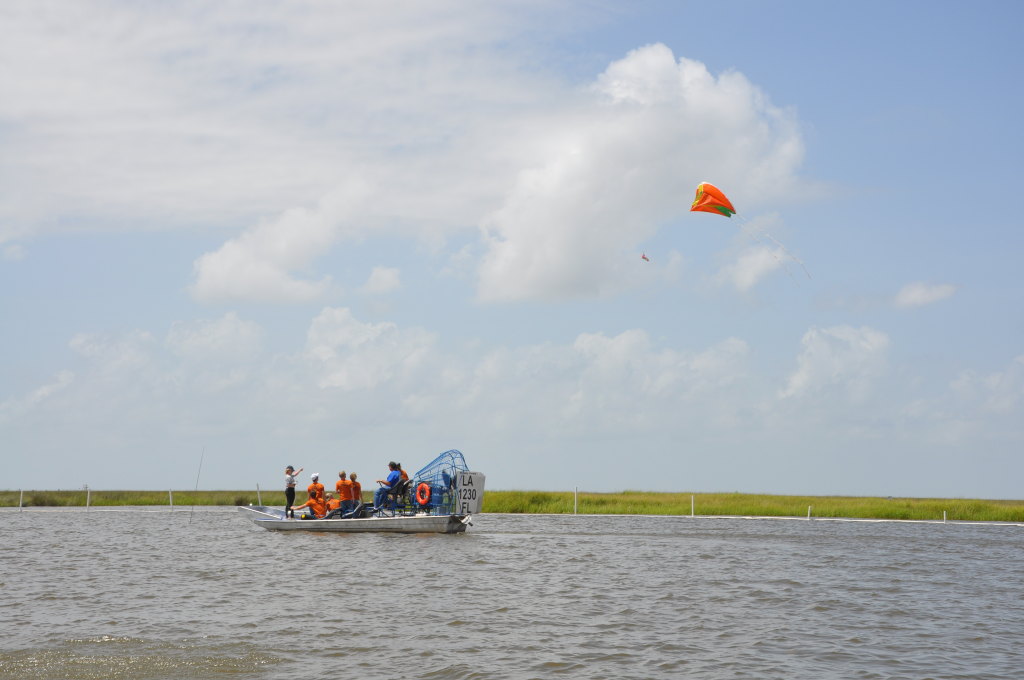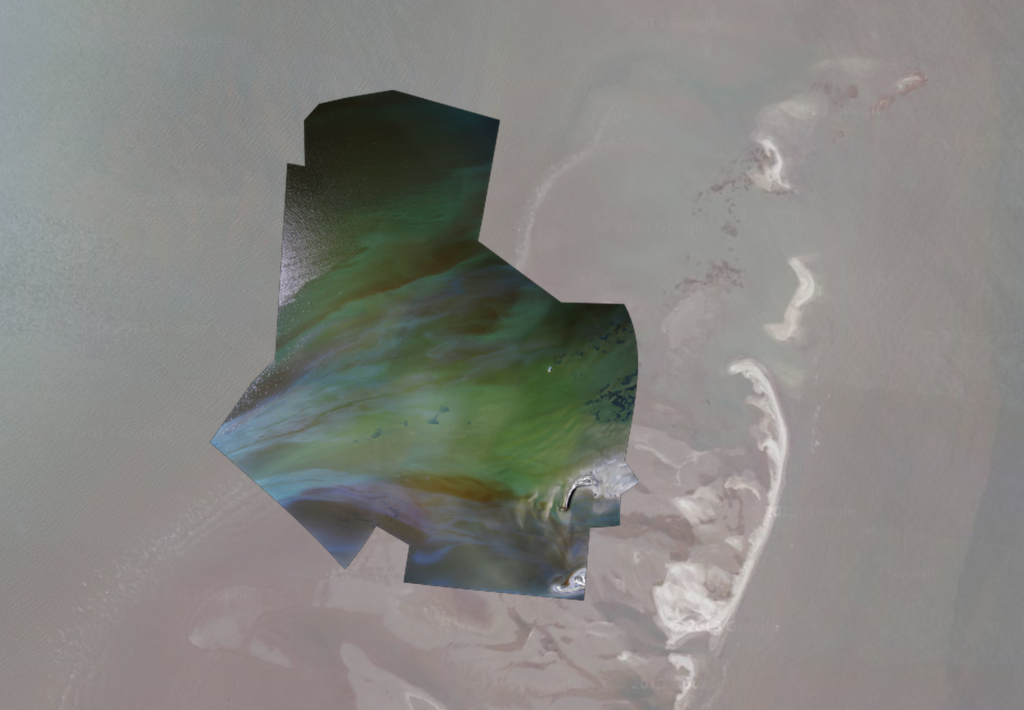This is a guest blog post by Shannon Dosemagen from Public Lab, a community where you can learn how to investigate environmental concerns. Using inexpensive DIY techniques, they seek to change how people see the world in environmental, social, and political terms. Shannon runs the session DIY Making for Social and Environmental Justice on Wednesday, July 16.
Kite mapping in Barataria Bay, 2010, image by Adam Griffith
Science isn't supposed to be simple. The prevailing notion of researcher is full of white lab coats, advanced degrees and fancy equipment. Most people wouldn’t dream of everyday citizens lugging around artifacts from the corner hardware store to gather data about the air we breathe.
In 2009, that's exactly what I was working on in industrial communities throughout the Gulf South. We were using 5 gallon buckets, small vacuums easily found at stores, plastic bags and a few pieces of hardware, put together as a low cost tool based on the Environmental Protection Agency (EPA) Summa canister. The air-sampling device gave (and still gives) residents access to information about the contents of emissions from industrial facilities they neighbor. This was my first foray into thinking about accessible monitoring technology and what community driven data collection could do: from communicating with regulatory officials, corporations, news media to enabling awareness campaigns, furthering government studies and even community relocation.
The Deepwater Horizon rig exploded in April 2010 and the Gulf Coast was thrown into chaos. People and organizations scrambled to grasp what was happening as smoke from burn sites covered parts of Southeast Louisiana and a corporate imposed media blackout domed the area. The event spawned heavy media coverage but few facts. My past experience on working with hacked smart tools from everyday objects remained central to rethinking how to capture the environmental impact.
Working initially with a handful of people, we launched tethered balloons and kites over 2,000 feet into the air, below the flight cap of 3,000 feet but high enough to photograph the sprawl of the oil spill below. Our detailed imagery around places such as the Chandeleur Islands captured the oil as the spill wrapped around beaches and strangled the shores. With our initial success at engaging Gulf residents and providing valuable data, we began the first large-scale Grassroots Mapping project that resulted in over 100,000 images of the spill, 100 miles mapped and provided access to participatory monitoring for over 200 volunteers who were involved in the mapping project—all done with three aerial mapping kits– a couple of balloons, kites, cameras and hardware.
Chandeleur Islands, May 9, 2010. Images captured via balloon by Mariko Toyoji, Stewart Long and Shannon Dosemagen. Images stitched by Stewart Long.
After our work on the spill wrapped up, I joined with six other individuals to take the Grassroots Mapping project to its next stage as Public Laboratory for Open Technology and Science (or Public Lab for short). Two of the social gaps that I was interested in addressing as a co-founder of Public Lab were based around issues of access. It was evident that there weren't many tools available at a price point that could be used by individuals or community organizations. As I taught environmental education in informal settings, I also noticed that the layers and hierarchy of expertise in science were stifling and exclusionary, rather than helpful in creating a public involved and engaged in their local environments. At Public Lab we talk about the full data lifecycles, and with this concept in mind, we created an open space where people could come to cooperate and collaborate, bringing their own personal experiences and expertise (local or academic) to the creation of low cost, DIY, open source monitoring tools.
Although in the name of the organization, “science” and “technology” take the forefront, Public Lab is focused on creating engaged communities, not just accessible tools. We've developed events called “Barnraisings” in the style of 19th century community gatherings in the United States where people would come together to help a neighbor raise a structure. Our gatherings, in similar style, bring people to an area to work together, create, build, think and discuss at sites of interest. Imagine working on a water sampling device in the oil and gas pipeline riddled wetlands of south Louisiana, or modifying a camera rig and then testing it out by capturing images of a contested nuclear power plant in Massachusetts. During our retreat style gatherings, where we eat together, stay in the same building and work during the day, people start to reimage their involvement with materials around them and begin thinking critically about aligning the concepts of “making” and “designing” to being a socially engaged member of society.
Public Labbers work on thermal fishing bobs at Tidmarsh Farms during the 2014 “tool focused” Barnraising in Plymouth, MA. Image from Eymund Diegel.
If you're interested in thinking through new ways to facilitate community based design and involvement, this session will provide a set of methods that will allow participants to better understand how diverse backgrounds can interact to create stronger, human focused, rather than user driven, tools and methods. I welcome you to tweet me @sdosemagen with questions or thoughts ahead of the session.


